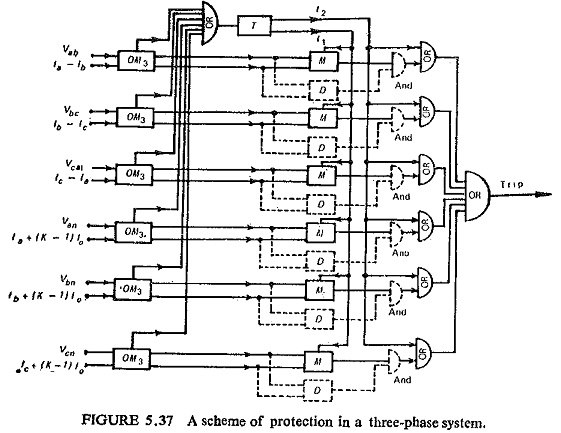Application of 3 Phase System:
In a Application of 3 Phase System, a wide variety of faults can occur, i.e. phase to phase, phase to earth, 2 phase to earth and 3 phase fault, various combinations in a Application of 3 Phase System lead to 10 varieties. Theoretically, 4 fault detectors and 18 measuring units are required for providing 3 stepped characteristics. Some duplication of relays is thus necessary in order to provide complete protection. A number of methods can be adopted such as those described below.
(i) Multiplicity of relays are used to cover all fault conditions. Six sets of relays are required for the three possible phase-to-phase faults and the three possible earth-faults. Other faults are covered by one or more sets of relays. This method involves much equipment but is also the most reliable.
(ii) Three sets of relays are sometimes used, which can be switched on to measure either phase to phase or phase to neutral quantities. The relays are normally connected for phase-to-phase fault measurement and are switched to earth-fault measurement by a residual current detector. Difficulties arise due to spurious residual currents and on changing faults and the arrangement is not in common use.
(iii) Six elements for phase-faults and six elements for earth-faults (Fig (5.37)). The ohmic reach of zone 1 is increased to that of zone 2 through contacts on a timing unit.
(iv) One set of relays is used and can be switched to any one of the six measuring conditions. This phase selection is normally accomplished by overcurrent and residual current relays, but may be supplemented by undervoltage relays. This is commonly known as switched distance protection scheme. Such schemes are economical and are common with static
